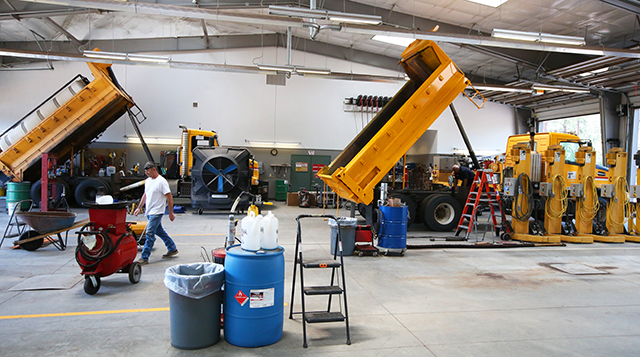Burns aim to help oak savannas near Table Rocks reclaim habitat, resist wildfire
Published 12:00 am Sunday, February 11, 2018
The oak savannas along the slopes of Lower Table Rock are starting to look a lot more like oak, one afternoon burn at a time.
The burning of cleared and stacked brush piles along the side of one of the Rogue Valley’s two signature mesas this past week is the latest effort to restore these oaken habitats while reducing wildfire threats and helping position oak savannas and those that rely on them for long-term climate change.
Trending
Now rounding out its third year, the Table Rocks Oak Climate Adaption Project this week pushed past the halfway point in its $1.4 million and perhaps five-year quest to treat 1,400 acres of public and private oak lands and help anchor massive oak revitalization efforts from California to Canada.
“Over the past few years, we’ve been chipping away,” said Shane Jimerfield, program director for the Ashland-based Lomakatsi Restoration Project, one of the main players in the multitiered effort. “We’ve done a lot of work the past few years, and it’s really coming together.”
This week’s burning was done by Lomakatsi crews on Bureau of Land Management lands within the Table Rocks area jointly managed by the BLM and The Nature Conservancy, Lomakatsi Executive Director Marko Bey said.
More burning could commence on nearby private lands when weather patterns change, such as in late February, Bey said.
Lomakatsi has partnered with BLM, TNC and a host of other state, federal and private groups such as the Wildlife Conservation Society. Most of the money needed to finish the project already has been garnered, Jimerfield said.
Of the 1,400 acres, about 600 acres have been completed and another 300 acres are somewhere in the process, Jimerfield said. The remainder has yet to be touched, he said.
Trending
Oaks always have been the other white meat of Western Oregon tree habitats, playing second fiddle to Douglas fir, Ponderosa pine and other more merchantable species. Much of Western Oregon’s oak habitat has given way to development from ranches, farms and cities in the relatively flat bottomlands oaks prefer.
Studies show only 1 percent of historical oak habitat remains in the Willamette Valley and about one-third in the Umpqua Valley, but no estimate is available for the Rogue Valley.
Often those that do remain are fighting enemies from above and below. Encroaching conifers overshadow the oaks, while dense underbrush creates unnatural wildfire conditions that could lead to burns that threaten oak crowns.
Treatments such as those along Lower Table Rock have included removing the conifers as well as clearing and burning brush so fires that move through burn less hot and help cleanse oak habitat.
The work is also a nod to climate models concluding that warmer, drier summers increase the risk of drought and wildfire. Restoring regular, low-intensity burns that were historically here — Native Americans living here regularly touched off fires to germinate nuts and other food sources — puts these oak savannas in better shape.
Reclaiming oak lands from their invaders has been on the radar screen of the conservancy’s local leaders and others for more than two decades.
“This is remarkable progress on a project I’d hoped to have gotten going 25 years ago,” says Darren Borgias, the conservancy’s southwest Oregon program director. “I’m just deeply grateful that it’s finally coming to fruition.”








